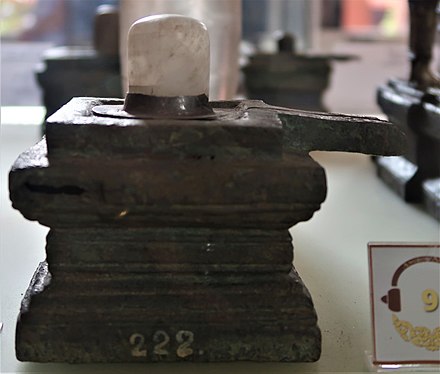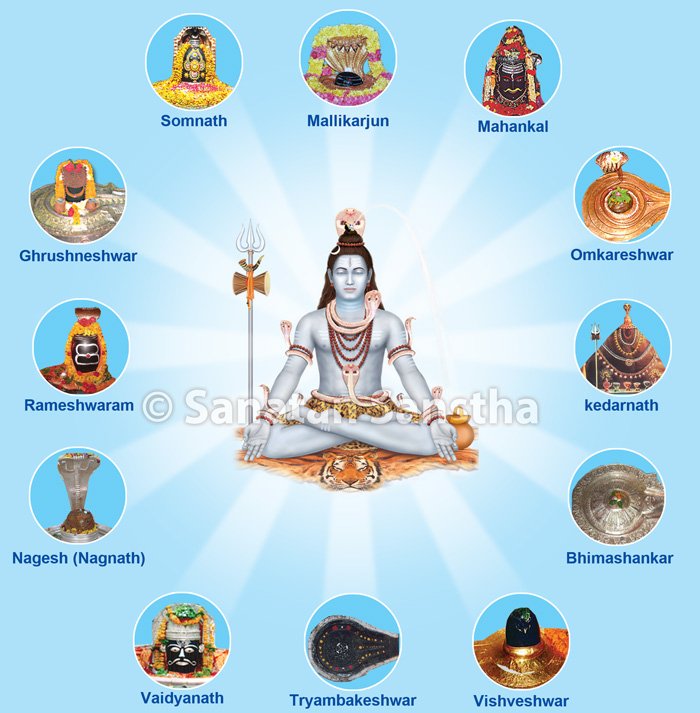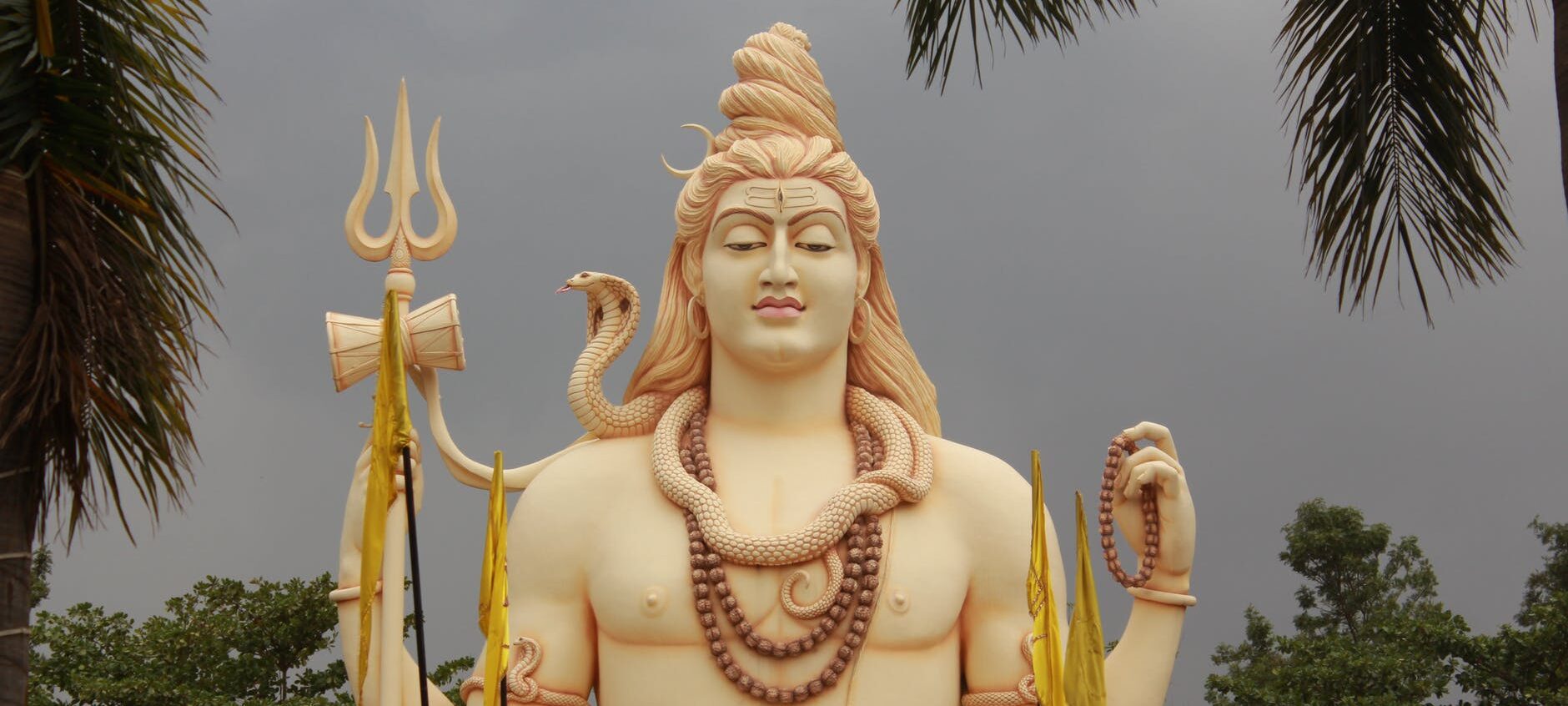Chapter Four of Hatha Yoga Pradipika is on the topic of Samadhi. It opens with its first verse praising Lord Shiva. Its 42nd verse talks about Shiva lingam. As we all know Shiva lingam is considered to be a symbol for many things.
First, let’s understand the definition of the word:
Definition
Lingam is a Sanskrit word that means a ‘sign’ or a ‘distinguishing symbol.’ It is considered a religious object in Hinduism that symbolizes Lord Shiva. It is also considered an emblem of generative power.
But to understand Shiva Lingam and its worship according to the tradition of Yoga, it is important to first read this verse from Hatha Yoga Pradipika and then meditate on it. This short verse will tell us everything we need to know about the concept of Shiva Lingam in Yoga, as well as help us remove all the misunderstandings surrounding the lingam.

Translation 1
Worship the lingam neither by day nor by night. By blocking the day and night the lingam should always be worshipped [1].
Translation 2
Do not worship the Atman by day. Do not worship the Atman at night. Always worship the Atman by halting day and night [2]
Meaning
Considering these two translations together will help us understand Shiva Lingam better.
The first sentence “Worship the lingam neither by day nor by night” is a confusing one. From the second translation, we can see that worshiping the lingam means concentrating on the atman. Atman is the highest state of consciousness. Day nor by night can either be taken literally or mean Ida and Pingala. This means that practices involving self-realization should be done either at:
- Sunrise
- Sunset
- Midday
- Midnight
These times are chosen because it is during these times that the mind and body are calm and most relaxed and so subtle states of mind and body can be accessed.
Now Shiva Lingam and its worship has been greatly misinterpreted by Indologists and researchers. In the Sanskrit dictionary, one of the meanings for the word ‘Shiva Lingam’ is written as ‘phallus.’ Researchers came to consider the act of worshiping lingam as some kind of act of worshipping the phallus. But, according to Sanskrit grammar and philosophy lingam has a different meaning. It also means a state which is unseen or invisible, but it still exists. Just like emotions (like bliss, sadness, calmness) are felt but not seen. Still, these emotions can be represented in a form (like painting or music).
Similarly, consciousness – total cosmic consciousness – is formless. Many words can be used to describe it, for example, Brahman, God, etc. To describe or comprehend such an abstract concept it is important to put it in the form of a symbol. A concept of such a grand scale otherwise can’t be comprehended by anyone, not even a yogi. It has to be first given an object, a solid form, and then it is to be comprehended by the meditator. That is the actual definition or meaning behind the lingam in Sanskrit – a symbol to meditate upon [1].
Shiva means the absolute or the universal consciousness. And Shiva Lingam is a symbol to comprehend that cosmic absolute.

Shiva Lingam as an Object
Shiva Lingam is oval in shape. It ranged from a few inches to about fifteen feet. It is believed that it is not carved but is found already formed in an oval shape. The source of these stones is the banks of the Narmada river. These stones are collected from their source and placed inside Shiva temples.
It is believed that the location of these temples is found by serious yogis and meditators through deep contemplation and revelation.
Some speculations even suggest that Shiva Lingam is a symbol for the birth of consciousness that has made humans self-aware. It is that unseen force that makes us aware and contemplative of what we are or who we are and what we are not.
In certain Shaivism/Shiva cults, the real Shiva Lingam is believed to be made from crystal. This is an interesting theory and can explain the multitude of powers or effects Shiva Lingam is said to have on the mind. Crystals have been shown to have effects on matter, and the mind. Their use for crystal healing is well-reported with scientifically proven benefits [5]. It is believed that crystals can store sound vibrations, these sound vibrations then play a role in changing your consciousness when you come in contact with the crystal.
When a person concentrates on a crystal lingam, there is a direct effect on his subconscious (anandamaya kosha). In Samkhya philosophy, the causal body is also called the Linga body – something that exists but can’t be seen. Concentration on Shiva Lingam can expose a person to his subconscious, which is believed to be the storehouse of infinite knowledge.

Important sites of Shiva Lingam
In India, there are numerous temples where Shiva Lingam is worshiped, but of these temples, 12 are considered as prominent. They are also called jyotirlingam. Jyotir means ‘light,’ so Jyotirlingam means ‘illuminated lingam.’
These twelve sites are:
- Somnath Jyotirlinga – Saurashtra, Gujarat
- Mllikarjun Jyotirlinga – Srisailam, Andhra Pradesh
- Mahakaleshwar Jyotirlinga – Ujjain, Madhya Pradesh
- Omkareshwar Jyotirlinga – Shivpuri, Madhya Pradesh
- Vaidyanath Jyotirlinga – Parali, Maharashtra
- Nageswar Jyotirlinga – Gujarat
- Kedareswar Jyotirlinga – Kedarnath, Uttarakhand
- Tryambakeswar Jyotirlinga – Nasik, Maharashtra
- Rameswar Jyotirlinga – Rameswaram, Tamil Nadu
- Bhimashankar Jyotirlinga – Dakini, Maharashtra
- Visweswar Jyotirlinga – Varanasi, Uttar Pradesh
- Ghrishneswar Jyotirlinga – Devagiri, Maharashtra
Shiva Lingam in Tantra and Kundalini
In Tantric and Kundalini literature, it is mentioned that there are twelve places in the body where the Shiva Lingam is located.
Three of them are considered important.
- Mooldhara chakra
- Ajna chakra
- Sahasrara chakra
Sahasrara chakra is considered the place where this Shiva consciousness resides in its finest form.
Thus, we have seen the yogic concept behind Shiva Lingam and how meditating on this powerful symbol can help us connect with our subconscious.
References
- Book: Hatha Yoga Pradipika: Light On Hatha Yoga, by Swami Mukti Bodhananda
- Book: The Hatha Yoga Pradipika (Translated), Svatmarama (Author), Brian Dana Akers (Translator)
- Book: Linga Purana: English Translation: 2 Volumes Hardcover, by J.L. Shastri
- Book: The Myths and Gods of India, by Alain Daniélou
- Can Crystals Heal ? Separating Facets from Facts [link]

1 thought on “Shiva Lingam: The Cosmic Consciousness”